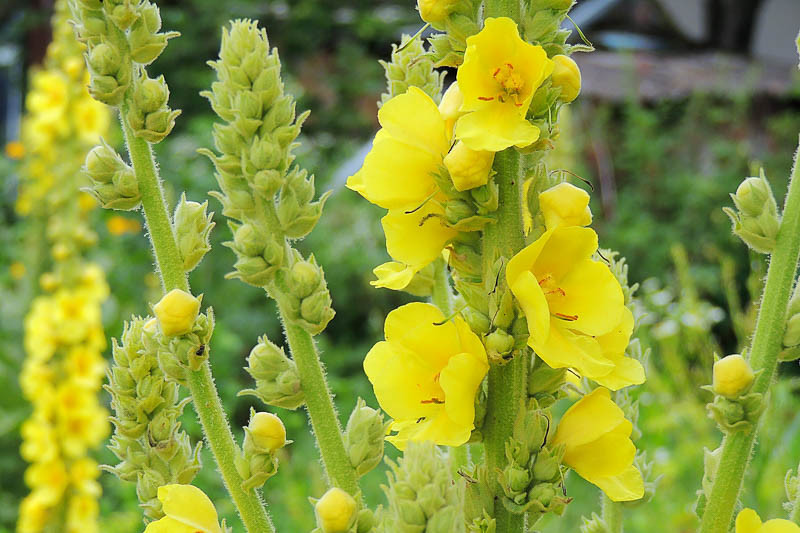Mullein
Mullein, botanically known as Verbascum, usually adopts a biennial or perennial growth pattern. During its first year, it sports a rosette of basal leaves, evolving into tall, columnar flowering stalks in its second. These stalks add a structural element to gardens and captivate with their height. Though mulleins come in over 250 species with varied appearances, a common feature is the fuzzy texture of their leaves and stems, attributed to tiny hairs.
Environmental Adaptability: Originating from Europe and Asia, the mullein plant showcases an impressive adaptability spectrum. It thrives in USDA zones 3 to 10, proving its resilience against chilly winters and the intense summer warmth. Its exceptional adaptability is further demonstrated by its preference for less-than-ideal soils, be it dry, sandy, or rocky, making it a champion for tricky garden spots.
Floral Display and Duration: Verbascum’s charm is undeniably in its lofty spikes, densely populated with blossoms ranging from yellows and whites to pinks and purples, contingent on the species. These floral displays, gracing gardens from late spring to the tail end of summer, often showcase a subtle hue variation at their core, lasting for an extended period.
Versatile Applications: The towering flower spikes of mullein naturally command a spot at the rear end of garden borders, lending height and a touch of drama. Its capacity to withstand drought also earmarks it for xeriscapes or rock garden designs. Beyond its ornamental value, traditional healers have often turned to this plant, especially its leaves, as a remedy for respiratory ailments.
Inherent Advantages: Beyond its aesthetic and therapeutic contributions, mullein plays an ecological role. Its blooms are irresistible to a spectrum of pollinators, from bees to butterflies, enriching garden biodiversity. Plus, its extensive root system serves as a natural soil binder, particularly in sandy or gravelly grounds.

